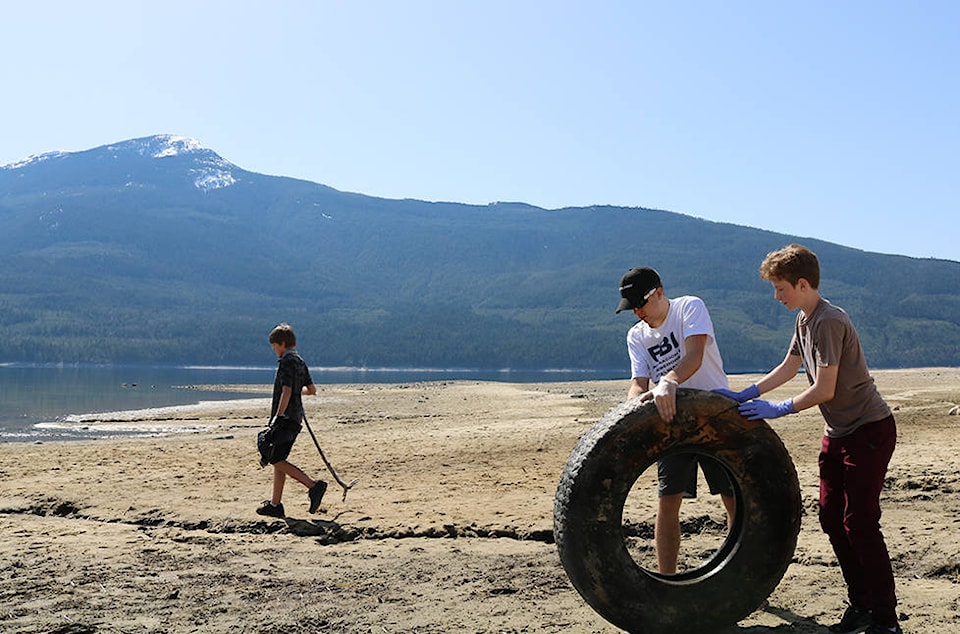Grade 9 students from Nakusp Secondary School’s humanities class, along with teacher Susan Paterson and student teacher Mr. Luc Boyer took part in an environmental effort on April 27. Students and instructors did a beach clean up project designed to pair with the topic ‘Consumerism and Industrial Revolution.’
The outing was successful - they did not leave empty handed. Boyer said, “We collected several bags of garbage, recyclables, lots of cans and plastic as well as a large truck tire which we recycled thanks to Kal Tire.”
Students enjoyed an afternoon in the sunshine while undoing some of the environmental impact of consumerism.
“I thought it would be an awesome way to have a meaningful community experience where students could participate in ‘place conscious learning;’ a major goal of the current B.C. curriculum,” said Boyer.
Shorelinecleanup.ca explains, “…whether deliberately dumped or accidentally dropped, litter can have devastating consequences for wildlife. Animals mistake litter for food or become entangled in rope, string and nets. Litter can transport invasive species, or introduce dangerous toxins into an ecosystem. Plastic litter can degrade into tiny invisible pieces called microplastics, that are impossible to pick up, but have dramatic impacts on wildlife.”
Schoo District 10 Arrow Lakes suggests that place concious learning “enhances students’ appreciation for the natural world, and creates a heightened commitment to serve as active contributing citizens.” It is said to help students develop stronger ties to their communities while capturing economic, historical and cultural context linking the theory to the real world instead of concepts in a textbook.
